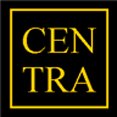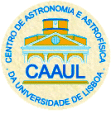Second Workshop on
3rd Generation Calibration
in Radio Astronomy
Portugal, 18-30 Sept 2011
3rd Generation Calibration
3GC differs from traditional (2GC) radio astronomical calibration by including the treatment of direction-dependent effects (DDE). This will be essential for high-dynamic-range wide-field full-polarization imaging with the new generation of radio telescopes (LOFAR, ASKAP, MEERKAT, ATA, MWA, LWA, HERA, SKA). In addition, the use of 3GC should significantly improve the results obtained with existing instruments like WSRT, EVLA, ATCA, GMRT, etc, some of which have been recently upgraded.
The most important DDEs are station beamshapes (EJones), the ionosphere (ZJones and FJones), and to a lesser extent the troposphere (TJones). This workshop will concentrate exclusively on beamshapes, since this is an urgent issue that is shared by all radio telescopes. We will endeavour to get closer to answering long-standing questions on beam stability and polarization, and their impact on the final image. Other instrumental effects will only be discussed as contaminants of the beamshape measurement process.
In particular, we propose to familiarize the participants with a new method that actually measures the individual station beamshapes during the observations, using bright compact "calibration beacons" in the field. Of course such a closed-loop approach is reminiscent of selfcal, and its adoption should have a similar impact.
The "Differential Gains" (DG) method was developed by Oleg Smirnov, and succesfully demonstrated with WSRT data last summer. By solving for the slowly varying differential gains in the direction of bright sources in the field, it achieved a dynamic range of about 3 million, a new record. More recently the method was extended to solve for parameters of suitable beamshape models.
Most importantly, these experiments appear to indicate that there are
enough calibration beacons in a typical 21cm field to measure the beamshapes continuously, as a function of time and frequency, and in full polarization. As you will appreciate, this finding is rather fundamental for the calibration of the new telescopes (including SKA).
Especially since the finding is (to first order) independent of station diameter, and increasingly valid for longer wavelengths.





